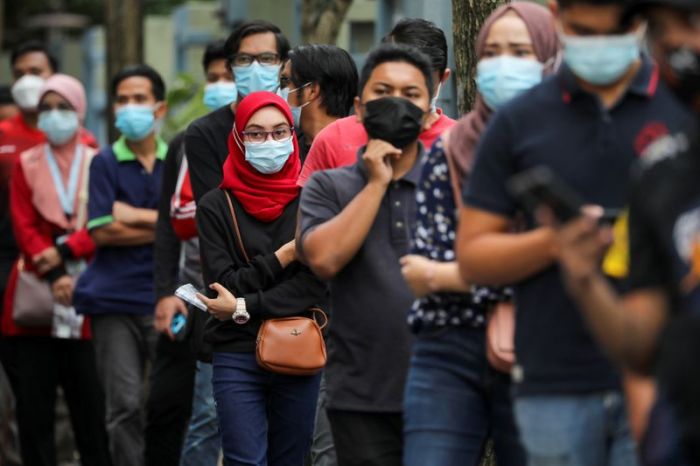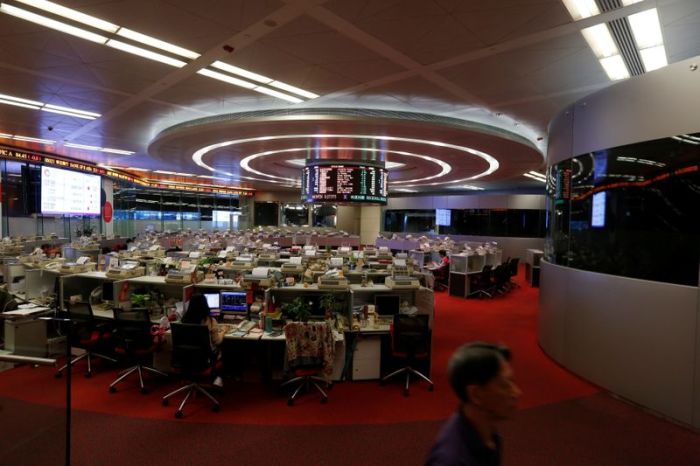ITAPUÃ DO OESTE, Brazil (Reuters) – The machete-wielding scientists ventured into the Amazon, hacking through dense jungle as the mid-morning temperature soared past 100 degrees Fahrenheit (38 C).
Soaked in sweat, the small group of men and women sawed and tore trees limb from limb. They drilled into the soil and sprayed paint across tree trunks.
This is vandalism in the name of science.
In the trees about 90 km (55 miles) from Rondônia state capital Porto Velho, the Brazilian researchers are seeking to learn how much carbon can be stored in different parts of the world’s largest rainforest, helping to remove emissions from the atmosphere that foment climate change.
“It’s important because we are losing forests globally,” said Carlos Roberto Sanquetta, a forestry engineering professor at the Federal University of Paraná in Brazil.
“We need to understand what is the role that forests play,” both in absorbing carbon when they are left intact and releasing it when they are destroyed.
Sanquetta led the weeklong research expedition in November, overseeing a team including a botanist, agronomist, biologist and several other forestry engineers to take myriad samples of vegetation – living and dead – for analysis.
It’s rigorous and elaborate work, often in humid and insect-infested conditions, involving chainsaws, spades, corkscrews and calipers.
“These are not white-coat scientists just lecturing people,” Raoni Rajão, who specializes in environmental management at the Federal University of Minas Gerais and is not involved with Sanquetta’s team. “These are hardworking people that get their hands dirty.”
(For graphics, see https://graphics.reuters.com/CLIMATE-CHANGE/BRAZIL-CARBON/nmovabezapa/index.html)
HOLISTIC APPROACH
The Brazilian team is just one contingent among hundreds of researchers seeking to measure carbon in the complex and environmentally crucial Amazon rainforest ecosystem, which sprawls across more than six million square kilometers in nine countries.
Some research seeks only to quantify carbon in trees, but Sanquetta says his team’s approach is holistic, measuring carbon in underbrush, soil and decomposing plant matter as well. In addition, his team is looking beyond primary forest, examining reforested areas to shed new light on how much carbon they hold – information key to incentivizing restoration efforts.
Carbon dioxide (CO2) is the most prevalent of the greenhouse gases, which lock heat into the earth’s atmosphere. Trees soak up carbon dioxide from the atmosphere and store it as carbon, one of the cheapest and easiest ways to absorb greenhouse gas.
The process also works in reverse, however. When trees are chopped down or burned – often to make way for farms or cow pastures – the wood releases CO2 back into the atmosphere.
“Every time there is deforestation, it’s a loss, an emission of greenhouse gas,” said Sanquetta, who is a member of the U.N. Intergovernmental Panel on Climate Change, the world’s top climate science authority.
At current emission rates, global temperatures are expected to rise about 2.9 degrees Celsius by 2100, according to nonprofit consortium Climate Action Tracker, far surpassing the 1.5- to 2-degree limit needed to avert catastrophic changes to the planet. Climate change raises sea levels, intensifies natural disasters and can spur the mass migration of refugees.
Deforestation in the Amazon has accelerated during the administration of Jair Bolsonaro, the right-wing president of Brazil. Since he took office in 2019, at least 825 million tonnes of CO2 have been released from Brazilian Amazon deforestation.
That’s more than emitted by all U.S. passenger cars in a year.
In a statement, the office of Brazilian Vice President Hamilton Mourão, who leads the government’s Amazon policy, said the rise in deforestation predated the current administration and that the government has been working around the clock to thwart destructive mining and lumber trafficking.
“We have not achieved the desired degree of success, but it could have been worse,” the statement said.
METICULOUS MEASUREMENTS
Key to understanding and addressing the climate threat is bringing more precision to carbon measurements in receding forests.
“Everyone wants this information,” said Alexis Bastos, project coordinator of the nonprofit Rioterra Study Center, a Brazilian organization that provides financial support and several scientists to Sanquetta’s team.
Today there are scientists measuring forest carbon on nearly every continent.
Aside from Sanquetta’s team, for instance, the Amazon Forest Inventory Network with its more than 200 partner scientists is trying to standardize carbon and other measurements, garnering huge amounts of data to “quantify” the forest.
The challenge is “there’s differences in species across the Amazon. In Peru in the southwest versus Guyana in the northeast, there’s virtually no species overlap at all, so it’s completely different plants in exactly the same climate,” said Oliver Phillips, the network’s coordinator and a tropical ecologist at the United Kingdom’s University of Leeds.
The network’s partners use precise parameters to capture the major carbon reservoirs, including in dead plant matter and soil. For instance, if a tree is on the border of a plot, it should be measured only if more than 50% of its roots are in the plot.
No one team could hope to sample enough of the vast rainforest for an exact count of carbon harbored by the Amazon. It’s also a moving target: The Amazon rainforest, which varies from tangled jungle to more open, riverine spaces, is constantly shifting, as more trees are chopped down while restoration efforts are accelerating.
Sanquetta’s team began its current line of research in 2016, relying on support from Rioterra, which itself received funding from Petróleo Brasileiro SA (Petrobras), the Brazilian state-owned oil firm. At the time, Rioterra was replanting destroyed areas of rainforest, and wanted to know how much carbon was being sequestered.
Petrobras told Reuters in a statement that it had been working for years to honor its “social responsibility” commitments, which among other things meant supplying energy while “overcoming sustainability challenges.”
Each weeklong expedition costs about 200,000 reais ($36,915.35). Sanquetta said his project has not received any money from Petrobras directly.
When the Petrobras funding dried up, Rioterra found support from the Amazon Fund, backed by the governments of Brazil, Norway and Germany.
Preliminary findings indicate that planting a mix of Amazon species is more effective in sequestering carbon than allowing the area to regrow naturally.
But findings also suggest there is no substitute for leaving forests untouched: A hectare of virgin Rondônia forest holds an average 176 tonnes of carbon, according to Sanquetta’s analysis of Brazilian Science Ministry data. By comparison, a replanted hectare of forest after 10 years holds about 44 tonnes, and soy farms hold an average of only 2 tonnes.
HEALING THE PLANET
Out in the jungle, Sanquetta’s team members swatted away swarming, stingless bees, while they dissected a 10-by-20-meter plot that’s been growing back naturally for almost 10 years, abandoned by a farmer.
The team counted 19 trees with trunks measuring at least 15-centimeters in circumference, a threshold above which trees generally hold significantly more carbon. Edilson Consuello de Oliveira, a 64-year-old botanist from neighboring Acre state, wrapped a tape measure around one of them.
“Bellucia!” he called out, identifying Bellucia grossularioides, a fruit-bearing tree that is one of the fastest to regrow. He rattled off the measurements, while another scientist scribbled them down.
A biologist nailed number markers into tree trunks. Meanwhile, a few in the group were hewing into a tree with a chainsaw, having selected it for “autopsy.” The shorn trunk was cut into pieces, the leaves stripped and bagged, and the stump dug up and weighed on a hanging scale strung from branches above.
“It’s destructive, but we only do it for a few trees,” said Sanquetta.
Another group drove a motorized, 3-foot (1 meter) metal corkscrew into the ground and pulled up dirt from four different depths. Others measured the width of decomposing plants with calipers and raked up ground debris.
The samples were taken back to the lab, where the team dried and weighed them, before incinerating them in a dry combustion chamber that allows them to measure how much carbon is contained.
The team measured 20 plots during a week’s work in November. The final goal is 100 plots by later this year.
The work offers “a way to measure the health of the planet,” Rajão said, but also “how quickly the planet could be healed.”
($1 = 5.4178 reais)
(Jake Spring reported from Brazil. Editing by Katy Daigle and Julie Marquis)





























